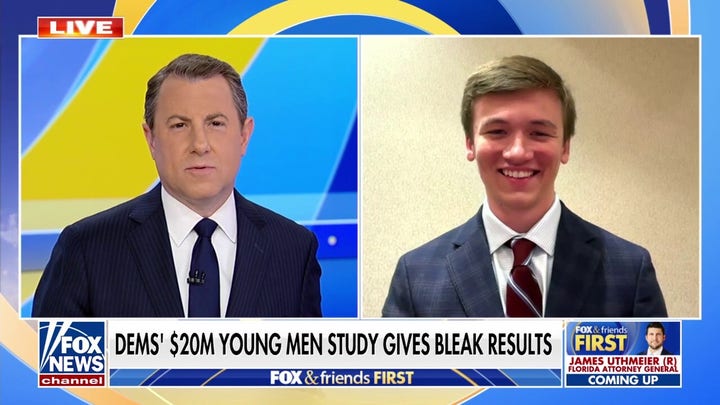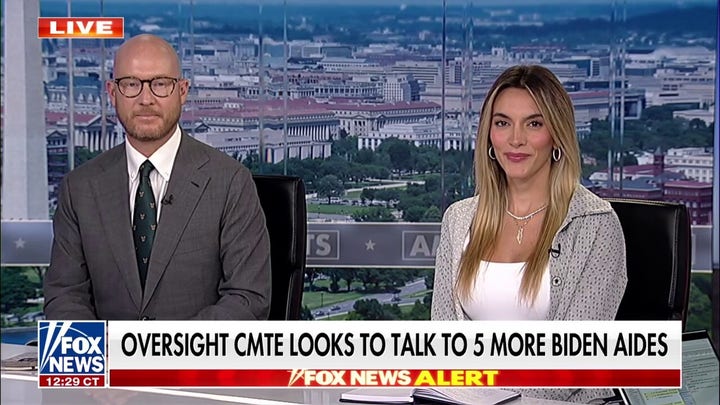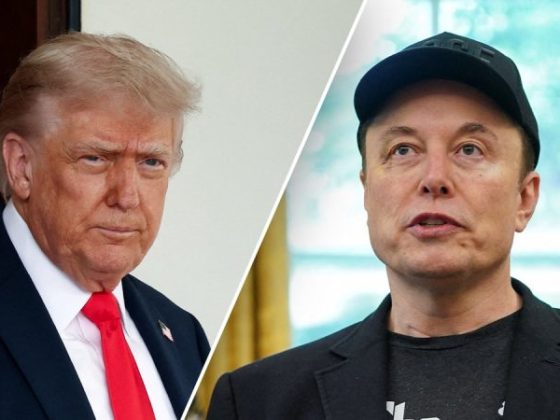
There are two truths about presidential candidates.
One: There is no such thing as a perfect candidate.
Two: It is very difficult to convince party elites that there are no perfect candidates.
President Donald Trump’s second first 100 days are now behind him, and the Democrats are still struggling to recover after the trauma of the 2024 election. As former President Joe Biden focuses on treatment for his cancer diagnosis, fresh questions about the chronology of Biden’s decline in mental and physical health have further wafted Kamala Harris’ hopes of a second presidential or California gubernatorial bid off the political radar and out to sea.
The Democrats have made it no secret they are in a desperate quest for the proper frontrunner/savior who can patch the torn fabric of their political and policy agenda, show enough leadership chops to unite both the Democratic Party and the country, and then go on to win back the White House in 2028.
Former President Bill Clinton used to say of his own complicated story, ‘If you want a perfect candidate, vote for somebody else.’ Yet back in 1992, despite myriad personal dramas, Clinton possessed many elements of the classic successful contender of that era: young but seasoned, a governor from a Southern state, folksy in style but gilded academically (Georgetown and Yale), respected for his brilliance within the party but able to relate to a broad swath of the voting public.
As always, at this stage of the cycle, the names of dozens of potential contenders from the out-party are being tossed about with the typical fervid combo of optimism, conviction, delusion and brio. But no potential candidate has yet broken out as an obvious frontrunner, let alone a great political athlete or generational talent such as Clinton or President Barack Obama.
That is not to say that the Democratic field does not include highly intelligent, highly accomplished and highly skilled women and men. The potential contenders are an extraordinary bunch of American leaders. But none has all the necessary elements to take on the current White House or make a clear bid to win it all.
Clinton, always good for a pithy remark, also has noted, ‘you can put wings on a pig, but you don’t make it an eagle.’
In 2028, if one could take a page from Dr. Frankenstein and turn that pig into an eagle, which attributes would the Democrats choose for their perfect model?
Let’s start with Pete Buttigieg, the former Transportation Secretary under Biden and before that, the wunderkind ‘Mayor Pete’ of South Bend, Indiana. Buttigieg, like Trump, has what one might call a ‘go-on-anything confidence.’ Pete can appear on any television network, any podcast, any stage (from vast stadiums to slatted apple crates), in any state in America, and feel comfortable and poised with his audience. That trait is an essential component for 2028.
Gavin Newsom, the governor of California, whose good looks and stylish mien often are cited more as a disadvantage than an attribute, has a profound understanding of what is modern and urgent for today’s electorate. Newsom thinks tirelessly about America’s future, and what is important to the young and the old, growing families and hard-working tradespeople, and everyone in between.
Gretchen Whitmer of Michigan, the popular governor of a swing state, understands how to connect with voters in a battleground arena by focusing on economic concerns and remaining on the right side of cultural issues despite party pressure.
Rahm Emanuel, former congressman, White House chief of staff, mayor of Chicago, and former ambassador to Japan, brings not just his famous rough-and-tumble uncompromising bravado, but an ability to raise massive amounts of cash. His fundraising power comes from the business community, where he made millions; from Hollywood, where his brother, Ari Emanuel remains an uber mover and shaker; and from decades of fundraising amidst America’s wealthiest Democratic communities.
Amy Klobuchar, senator from Minnesota, has a fierce determination and inner energy that will allow her to set goals and follow through with conviction. This is an essential combo required to win a modern political contest.
Josh Shapiro, the governor of Pennsylvania, has shown he can twist the old adage of former New York pol Mario Cuomo, who spoke of campaigning in poetry and governing in prose. Shapiro, on the other hand, is able to merge poetry and prose in his governance, achieving solid substantive goals while creating an atmosphere of aspiration and inspiration for his constituents.
Alexandria Ocasio-Cortez, the congresswoman from New York, has the ‘It Factor.’ Bright, charismatic, and always interesting, she commands attention whenever she speaks. (Or tweets, or comments, or posts, or poses).
Gina Raimondo, Biden’s Commerce secretary and former governor of Rhode Island, is well-known, well-liked, and well-respected in the business community, which offsets a huge imbalance on the Republican side. A pro-business Democrat, Raimondo can speak the language of the business world, get its political support and earn its trust.
Ro Khanna, congressman from California, understands policy and how to connect it to the real lives of real people. Khanna is a stand-out in the Democratic Party who can envision viable policy ideas and can explain his plans plainly to the American people.
Wes Moore, the governor of Maryland, has a powerful origin story and biography. After overcoming some early challenges, Moore thrived academically, served in the military, worked on Wall Street, authored several books, ran a leading nonprofit, and dedicated his life to service. He has shown a capacity to link lessons learned from his life experience to his policy goals.
Meanwhile, over on the Republican side, the GOP already has their frontrunner. And with JD Vance, there currently is no assembly required.
With just a few months as vice president under his (Rust) belt, Vance already has proven to be perhaps the most powerful and effectual vice president in history — yes, even including Dick Cheney, Al Gore and LBJ. Not only has Vance brilliantly managed to remain this close to the mercurial Trump without once stepping on his presidential toes, but he has forged solid bonds with fellow politicos (even those who initially looked askance when Vance was tapped for the ticket).
He has built up an impressive, appropriate and exceedingly visible administrative portfolio and networked productively with the most powerful GOP grassroots activists and fundraising leaders around the country.
Simultaneously, he trotted out and shielded his attractive young family; and offered a friendly hand and flash of coattails to those peers with presidential aspirations of their own, such as Secretary of State Marco Rubio and Virginia Gov. Glenn Youngkin.
Clinton, always good for a pithy remark, also has noted, ‘you can put wings on a pig, but you don’t make it an eagle.’
Vance has an additional, and unique, advantage. Most vice presidents who are champing to step into the top spot only get the chance after slogging through eight long years as a second banana, and must fight for the job just as the country has grown weary of the current administration and are longing for a new dynamic. Some, such as George H. W. Bush, can slide into office riding the departing fumes of their popular boss, while others, such as Al Gore, fumble to seal the deal.
Vance will be able to run as a sitting vice president after serving just one term, still relevant, still modern, but with a souped-up resume and sleek gravitas.
That is a feature Doctor Victor Frankenstein couldn’t envision in his wildest dreams.
And of all the current asymmetrical advantages on the Republican side, this is, by far, the most imposing.
As a famous scientist once said, ‘It’s alive!’




